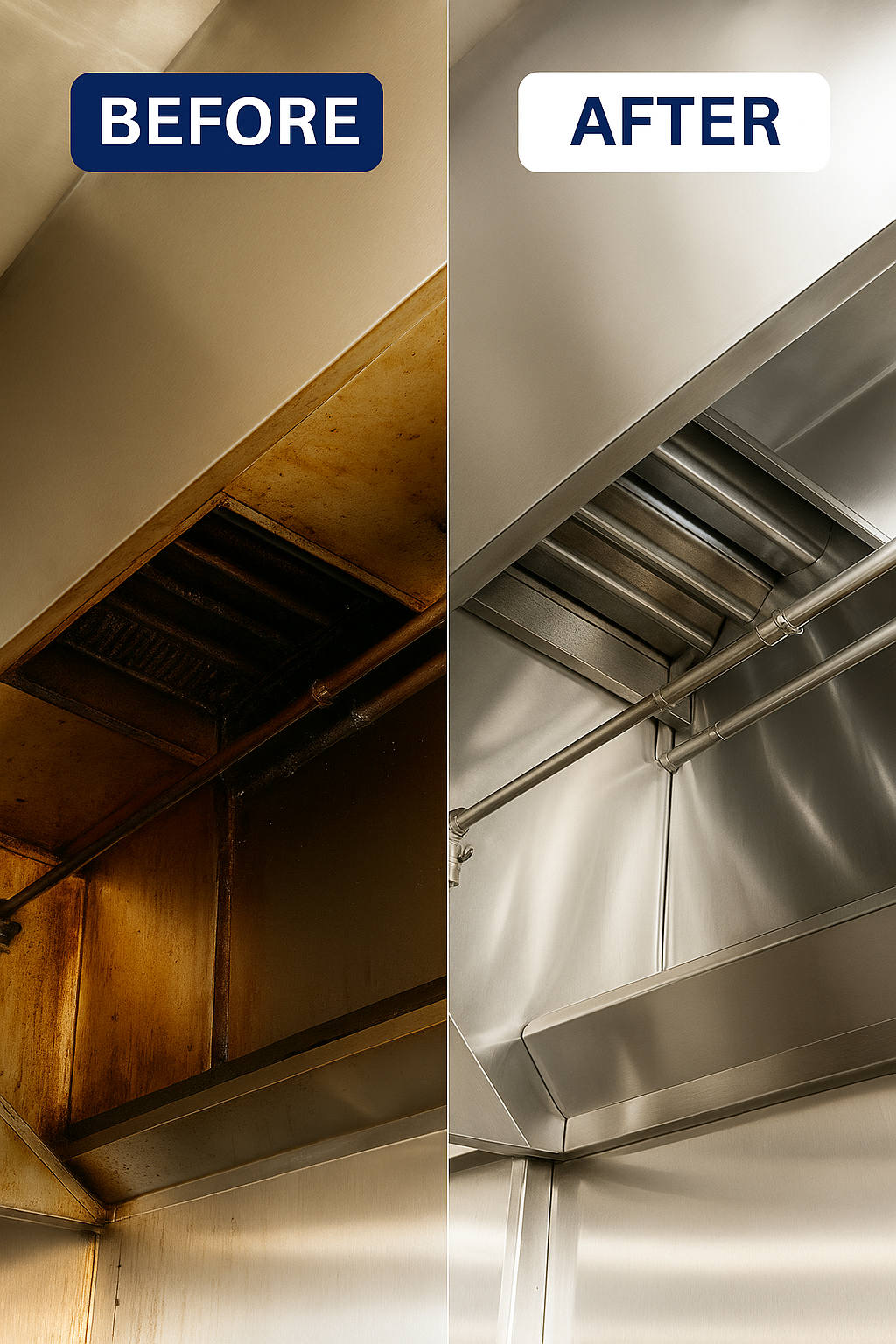Kitchen Exhaust Cleaning & Hood Degreasing in Chicago, IL
Dirty kitchen hoods and grease exhaust systems are one of the leading causes of commercial kitchen fires. Airways Systems provides professional kitchen exhaust cleaning and hood degreasing services to businesses throughout Chicago and the surrounding Chicagoland area. With over 80 years of HVAC and fire protection experience, we help restaurants, hotels, schools, and institutions stay safe, compliant, and efficient.
Why Kitchen Exhaust Cleaning Matters:
Grease buildup in kitchen exhaust systems isn’t just unsightly, it’s dangerous. Without regular cleaning, commercial exhaust hoods and ducts can become a major fire hazard. According to the National Fire Protection Association, more than half of restaurant fires start in the kitchen, often due to neglected exhaust maintenance.
- Reduce fire risk and improve safety
- Ensure compliance with NFPA 96 National Fire Protection Association & local codes
- Improve airflow and kitchen efficiency
Fire Safety & NFPA Compliance:
We follow all National Fire Protection Association (NFPA) and IKECA (International Kitchen Cleaners Association) guidelines and provide full documentation, including post-cleaning inspection reports and photographic evidence. Our certified technicians use advanced degreasing solutions and commercial-grade equipment to clean exhaust hoods, filters, ductwork, and fans.
NFPA 96 - 12.4 Exhaust System Inspection Schedule
Type or Volume of Cooking Frequency |
Frequency |
| Systems serving solid fuel cooking operations | Monthly |
| Systems serving high-volume cooking operations such as 24-hour cooking, charbroiling, or wok cooking | Quarterly |
| Systems serving moderate-volume cooking operations | Semiannually |
| Systems serving low-volume cooking operations, such as churches, day camps, seasonal businesses, or senior centers. | Annually |
Our Kitchen Hood Degreasing Process:
Every commercial kitchen has unique needs. Our tailored process ensures your grease exhaust systems are thoroughly cleaned and inspected:
- On-site assessment of the hood and exhaust system
- Protection of cooking equipment and surfaces
- Degreasing and power washing of hoods, ducts, and fans
- Final polish and system inspection with before/after photos
Serving Restaurants & Commercial Kitchens Across Chicagoland
From downtown Chicago to suburbs like Naperville, Oak Brook, Schaumburg, and more, Airways Systems serves the full Chicagoland region. Whether you're a restaurant or a large institutional kitchen, we’ll keep your exhaust systems in top shape.
Why Choose Airways Systems for Exhaust Cleaning?
- Over 80 years of commercial HVAC and exhaust experience
- Fully licensed, insured, and NFPA-compliant
- Trusted by hotels, schools, restaurants, and hospitals
- Available for scheduled or emergency cleanings
Get a Free Quote for Hood Cleaning!
Protect your kitchen, your staff, and your bottom line. Contact Airways Systems today for a free consultation and quote for professional kitchen exhaust cleaning in Chicago, IL.
